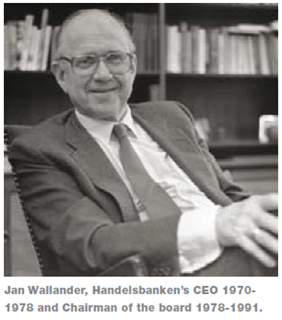 What if we set up an experiment to test how human subjects (and therefore we) respond to ‘authority’ ordering them to break their moral code?
What if we set up an experiment to test how human subjects (and therefore we) respond to ‘authority’ ordering them to break their moral code?
What if this experiment went so far as to order the (effective) killing of another human?!
…and, of immense importance, what do we learn from this?
Some of you may be guessing where this is going: This post is about Professor Stanley Milgram’s infamous1 experiments at Yale University (1960 – 63) in which he wanted to test our obedience in the face of orders from an accepted authority that defy our conscience.
My intent in this post is to clearly set out a hugely significant point such that this can be subsequently built upon (by you in pondering what it means in application to your world, and by me in likely future posts).
The grounds for Milgram’s research were the Nuremburg trials, and the consistent defence from those ‘in the dock’ that they were “following orders” which, to most of us, invokes judgement of amoral and/or cowardly people offering excuses, and fills us with disgust.
But this begs the hugely uncomfortable question: ‘So, given the same orders, would you be any different?’ The answer might ‘shock’ you.
I came across Milgram’s psychology experiments many years ago and was fascinated by them…but it was only recently that I read his book (first published in 1974) that vividly chronicles exactly how the experiment (and its various permutations) was created, carried out, de-briefed and concluded upon…and it is one of the most thought provoking books I’ve ever read.
(Note: The experiment has been reproduced many times – across cultures, genders and in modern times – with comparable results)
The Experiment explained
Now, for those of you who don’t know (much) about the experiment, here are the basics
- An advertisement was placed in the local newspaper asking for people from all walks of life to take part in a study of memory and learning by the psychology department at Yale University. Volunteers would be paid $4 for one hour of participation. It made clear that no special experience was needed, and there would be no further obligations once the study had been performed.
- Many people came forward. The researchers considered ages, educational levels and occupations to balance participation across all the permutations of the experiment that they would carry out. Over 600 volunteers were used. Each was sent an exclusive allotted time to attend.
- The experiments were conducted in a laboratory of Yale University so as to make it appear legitimate. As in many psychology experiments on humans, it required confederates* to act certain roles and thus make the volunteer (the person who is unwittingly the subject of the experiment) to believe that they are part of what appears to be something else all together.
* Confederate: An actor who participates in a psychological experiment pretending to be a subject but in actuality working for the researcher.
Here’s how the experiment works:
- Two people turn up for the experiment at the laboratory as per their invite and are greeted by an experimenter. He is dressed in a grey technician’s coat and will ‘run’ the memory and learning experiment, explaining what is taking place, setting it up and controlling it.
- The experimenter explains that the study is concerned with better understanding the effect of punishment on learning and, in particular, whether people learn things correctly by being punished for making a mistake (such as smacking a child).
 Up-front explanation: The experimenter (E) explains that there are two roles: learner (L) and teacher (T).
Up-front explanation: The experimenter (E) explains that there are two roles: learner (L) and teacher (T).
- The teacher will read a set of four word pairs to the learner, and then ask the learner to remember a correct pairing;
- The learner is to indicate the correct answer by pressing one of four switches;
- Whenever the learning makes an error, the teacher will administer an electric shock, starting at 15 volts.
- Role selection: The experimenter asks the two people for any preferences as to which role they take and then suggests they draw for it. In fact, one of the men is an actor (i.e. working with the experimenter) and the draw is rigged so that he is always the learner. Thus, we have set up our one true volunteer (the subject of the study) into the role of teacher.
- Taking up positions: the learner (our actor – and soon to be ‘victim’) is taken into a side room, strapped into a chair and an electrode is attached to his wrist. The strapping is explained as “to prevent excessive movement whilst being shocked”. The experimenter makes sure that the teacher is present and assists (i.e. knows exactly what is happening).
The experimenter and teacher return to sit in designated seats in the main laboratory next door, ready to begin.
 Shock generator: On the teacher’s desk is a large piece of apparatus. It has a line of thirty switches, labelled as ranging from 15 to 450 volts, in 15 volt increments. There is also a written scale underneath the switches starting at the left with ‘slight shock’, through ‘moderate’, ‘strong’, ‘very strong’, ‘intense’, ‘extreme intensity’, ‘danger – severe’, and finishing at the 450 volts end simply with ‘XXX’. The experimenter provides the teacher with a sample shock using the 3rd switch (45 volts), making the volunteer strongly believe in the authenticity of the generator through an “owch”!
Shock generator: On the teacher’s desk is a large piece of apparatus. It has a line of thirty switches, labelled as ranging from 15 to 450 volts, in 15 volt increments. There is also a written scale underneath the switches starting at the left with ‘slight shock’, through ‘moderate’, ‘strong’, ‘very strong’, ‘intense’, ‘extreme intensity’, ‘danger – severe’, and finishing at the 450 volts end simply with ‘XXX’. The experimenter provides the teacher with a sample shock using the 3rd switch (45 volts), making the volunteer strongly believe in the authenticity of the generator through an “owch”!
- Instructions: The teacher is provided with the memory exercise questions to read out and told to administer a shock to the learner each time he gives a wrong response. The key bit – the teacher is instructed to move one switch higher on the shock generator each time the learner gives a wrong answer and to announce the voltage level to the learner just before applying it.
- Victim feedback: So, firstly, you’ve probably guessed it by now – our victim isn’t actually going to receive the electric shocks but the teacher (our subject) most definitely believes that he is! Instead, a tape recording has been made of our victim acting out highly believable responses to being shocked, and this is played to the teacher at the appropriate moments.
- The victim’s responses start with little grunts, rising to shouts of pain.
- At the 150 volt level, the victim cries out that he doesn’t want to be a part of the experiment anymore.
- His responses escalate, repetitively asking to be let out such that, by 270 volts, it is an agonising scream.
- At 300 volts, he refuses to provide any more answers (see below for how this is dealt with).
- His screams and protests reach a peak and then, from 330 volts, no further noise is heard – utter silence.
- Experimenter feedback: As you would expect, our subject (the teacher), on hearing the victim’s worsening feedback, is going to increasingly turn to the experimenter for guidance…and, as for our victim, the experimenter’s responses to the teacher are scripted.
They start simply with “please go on” through an increasing sequence of “the experiment requires that you continue”, then “it is absolutely essential that you continue” and then “you have no other choice, you must go on”.
- Three other specific pieces of feedback are scripted:
- whenever the teacher asks or protests about the victim being hurt then the experimenter is to respond “Although the shocks may be painful, there is no permanent tissue damage so please go on”;
- whenever the teacher asks about what to do when the learner doesn’t want to go on, then the experimenter’s response is “Whether the learner likes it or not, you must go on until he has learned all the word pairs correctly”;
- and, finally, if the teacher asks about what to do when the learner doesn’t reply, then the experimenter’s response is to advise the teacher to allow the learner 5 to 10 seconds and take no response as a wrong answer (i.e. carry on up the shock scale) and continue on to the next question.
Of note: The experimenter uses no force, or threat of force, or threat of any form of retribution for disobedience. He merely uses his position of authority.
What was expected?
So, the true question that the researchers wanted to study: At what point (i.e. level of volts) will the teacher disobey the experimenter and refuse to continue delivering electric shocks?
Milgram did a rather cool thing – he staged a lecture on the topic of ‘obedience to authority’ and invited three different groups of people to attend: middle-class2 adults, college students and psychiatrists. He explained the experiment in detail to his audience without disclosing the results in any way.
 He provided each person in his audience with a diagram of the shock generator and asked them to reflect on the experiment as just explained to them, and privately record how they believed they would personally perform if they had been the ‘teacher’ subject i.e. mark at what point on the scale they would disobey the experimenter. He then gathered in their responses.
He provided each person in his audience with a diagram of the shock generator and asked them to reflect on the experiment as just explained to them, and privately record how they believed they would personally perform if they had been the ‘teacher’ subject i.e. mark at what point on the scale they would disobey the experimenter. He then gathered in their responses.
I guess it’s no surprise that not one single audience member (whether middle-class adult, college student or psychiatrist) said that they would administer the 450 volt shock i.e. they all predicted defiance on their part.
Some indicated that they wouldn’t deliver any shocks at all, and a very few indicated that they would disobey at the 300 volt level, with the rest of the audience falling somewhere in between. The mean predicted ‘point of disobeying’ for the middle-class adults, college students and psychiatrists in the audience was 120 volts, 135 volts and 135 volts respectively i.e. no real difference in their thinking.
Further, Milgram realised that people like to see themselves in a favourable light and therefore the above predictions from the audience could have a vanity bias. He therefore asked the psychiatrists a different question: how do you predict other people would perform? They predicted that most subjects would not go beyond 150 volts and that about one in a thousand (i.e. someone with a psychological disorder) would administer the full 450 volt shock level.
Milgram explains that if the actual results were statistically different to these predictions then there is something very important going on that we should want to study and understand.
So, what actually happened?
Well, the results of the experiment were nothing like people’s predictions, and surprised the researchers!
For the basic version of the experiment (as explained above), 65% of subjects (the teachers) delivered the maximum (i.e. lethal) 450 volt shock to the victim and, of the minority that disobeyed, it took until the 300 volt level before the first one did so. Now that’s troubling! It’s important to note that there was a great deal of stress feedback exhibited by the teachers (i.e. it wasn’t a scene of happy compliance)…but, significantly, this didn’t prevent them from continuing.
If you’d like to get a really good feel for what all of that actually looks like, and understand some of the emotions involved, then here’s a very good ten minute YouTube showing the British “mentalist and illusionist’ Derren Brown accurately re-performing the experiment with unsuspecting people for one of his TV programs4. If you’ve read this far (!) then it really is worth watching.
What’s going on?
Milgram went on to create 17 variations to the experiment, to find out more and his analysis is highly significant. I hope to write some further posts that explore the reasoning, and its application to our world at work.
A basic conclusion for now:
“The social psychology of this century reveals a major lesson: Often it is not so much the kind of person a man is as the kind of situation in which he finds himself that determines how he will act.” (Stanley Milgram)
Notes
- The experiment was infamous because it was criticised at the time as being unethical. You should know that every volunteer was thoroughly debriefed afterwards and was followed up later by way of interviews and the sharing of the outcomes.
- It seems a bit weird writing ‘middle-class’ but this was Milgram’s categorisation back in the 60’s. Perhaps wording from another age? (or perhaps not?)
- Recommendation: So I’ve gone into a fair bit of detail in the above so that you appreciate the experiment…but I’d still thoroughly recommend the book ‘Obedience to Authority’ by Stanley Milgram.
- The final comment from the last subject on the YouTube clip (about making ‘more notches on the machine’) is quite amazing!
 So I was passed a ‘McKinsey Quarterly’* article today by a good colleague of mine. It was titled
So I was passed a ‘McKinsey Quarterly’* article today by a good colleague of mine. It was titled  I find it ironic when any consultancy writes such a piece in a style that (in my view):
I find it ironic when any consultancy writes such a piece in a style that (in my view): I hope McKinsey won’t mind me reproducing here the‘exhibit’ within their article
I hope McKinsey won’t mind me reproducing here the‘exhibit’ within their article  So I had a fabulous conversation with one of my (excellent) colleagues. Let’s call him (or her 🙂 ) ‘Bob’.
So I had a fabulous conversation with one of my (excellent) colleagues. Let’s call him (or her 🙂 ) ‘Bob’. So this post is part 2 of a two-part piece in respect of budgeting.
So this post is part 2 of a two-part piece in respect of budgeting. I find it mesmerising! And it’s pretty cool seeing how it actually works 🙂
I find it mesmerising! And it’s pretty cool seeing how it actually works 🙂 1. System-level Clarity:
1. System-level Clarity: What a great phrase! Putting lipstick, some earrings and a blonde wig on a pig doesn’t change what it is…even if you are doing so with good intentions! (Ewe, that’s a weird thought).
What a great phrase! Putting lipstick, some earrings and a blonde wig on a pig doesn’t change what it is…even if you are doing so with good intentions! (Ewe, that’s a weird thought). So, I’ve always intensely disliked the ‘budget’ thing. Not the basic idea of thinking ahead, about what might happen, and attempting to do sensible things to cope with this – don’t worry, I’m not about to advocate ‘sticking your head in the sand’ – but the management belief that we can and should carry out a grand planning exercise (usually annually) in which we attempt to predict ‘what will be’ in great detail, and then watch for, and attempt to explain away, any and all deviations from it.
So, I’ve always intensely disliked the ‘budget’ thing. Not the basic idea of thinking ahead, about what might happen, and attempting to do sensible things to cope with this – don’t worry, I’m not about to advocate ‘sticking your head in the sand’ – but the management belief that we can and should carry out a grand planning exercise (usually annually) in which we attempt to predict ‘what will be’ in great detail, and then watch for, and attempt to explain away, any and all deviations from it.
 He took on the role of Handelsbanken’s CEO in 1970 and got stuck in to doing things quite differently! As an example, he was particularly scathing about budgets:
He took on the role of Handelsbanken’s CEO in 1970 and got stuck in to doing things quite differently! As an example, he was particularly scathing about budgets: So I was in a meeting. A colleague spoke up and said that she felt that incentives weren’t a good thing, that they caused much damage and that it would be better to remove their use and replace them with something better.
So I was in a meeting. A colleague spoke up and said that she felt that incentives weren’t a good thing, that they caused much damage and that it would be better to remove their use and replace them with something better. This is a short and simple post that merely shares a most excellent quote that I have on my wall – it says so much to me:
This is a short and simple post that merely shares a most excellent quote that I have on my wall – it says so much to me: